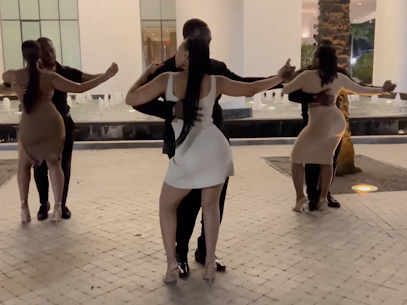Difference between Gouye and Ploge
For a long time, Haitian Konpa dancing was considered an underground dance.
Despite Haitian Konpa’s musical influence on the world since the early 1950s, the dance style remains a mystery to its fans. To have learned the dance, you would have had to watch your parents dance at home or watch friends dance to it at club night parties.
In today’s tech social society, Konpa fanatics are learning by imitating what they see on social media. If you’ve ever played a game called telephone, you’ll see that this is not a quality way to learn. Not all information passed on to you is accurate if it wasn’t passed on to you by a reputable source.
So today, I want to give you clarity on Gouye and Ploge. If you’ve never heard these Haitian terminologies before, this article will still be a good read for you.
Ploge
First, we will take on Ploge, the sexual appeal of the two. In Konpa dancing, you’ll have moves that are for the proactive dancers. Meanwhile, you’ll have motionless dance moves like Ploge for the non-active dancers. Ploge means “to plug“. This dance move is where a lead dancer and a follow dancer connect at both the chest and at the waist for a sexual yet sensual experience. When I say sexual, I’m speaking in terms of the dance movement in combined relation to the dancer’s intentions. The couple holds each other very tightly in a Tet Kole ( forehead connect ) connection as their hips make unnoticeable grind movements. Notice I choose to use grind instead of whine.
Going back to the Haitian term ploge, when someone plugs something into something else, it remains motionless until unplugged. The dance move takes on the same principle.
With pro-active dance moves, knees are always bending. To disable the knee bending motion for both parties, the lead will place his toes directly in front of the toes of his partner. This will force both partners to generate motion from their core, in other words, their hips. Though this move is slightly motionless, it’s very enjoyable and is normally exclusive for partners who are in a committed relationship.
Gouye
Now let’s take on the popular gouyad, which means to gouye or to whine. Like ploge, gouyad is a dance move that takes place at the hips. However, with gouyad being a pro-active dance move, the move will require a lot of knee bending. This means the footing of both partners will result in a window position instead of being placed directly in front of each other.
When 2 people gouye ( whine ) with one other, they will rotate their hips in one of two rotations, a figure 8 rotation or a full angular circle motion. Both parties are still held close but are not held as tight the way you’d find ploge.
Pairs who gouye hardly gouye with sexual intentions. In many cases, they won’t even be together intimately. People who gouye are at times friends who are comfortable with one another, singles looking to have a good time, or plainly dancers who want to show off their gouyad skills on the dance floor.
So in a nutshell, both gouye and ploge are dance moves that require both partners to be close. The major difference between them, aside from gesture, is that ploge should be reserved for intimate couples while gouye could be something done just for fun. You don’t have to be intimate with someone to gouye with them.
Music
While there is no specific song for either dance move, there is a style. In 19th-century Konpa music and later, gouyad music has gained its independence as a sub music style of Konpa music. The style shies away from its animated Konpa roots and evolved into a very sensual and romantic sound. I’m not saying that post the 19th-century konpa music there has never been romantic konpa music. But there has always been a section of Konpa music where a guitar solo would take lead. This is where gouyad or ploge dancing would take place. But with the evolution of gouyad music by Konpa and Zouk DJs and beatmakers, this reserved section of Konpa music now debuts as its own sub-genre. So it is very likely to hear Konpa fans call any none-vocal sensual/sexual Konpa music, gouyad music.
Language
Gouyad music is usually without sound. The instruments were intended to consume dancers. Vocals are usually distractions. Remember, gouyad dancing was supposed to be for a reserved solo section of Konpa music. With this section extended to a full 3-6 minute track, the intention remains the same… close to vocals. Should you find vocals, Haitian Creole is the primary language of choice. But with the spread of Gouyad music into French zouk music culture, you’ll find some gouyad music with French vocals.


